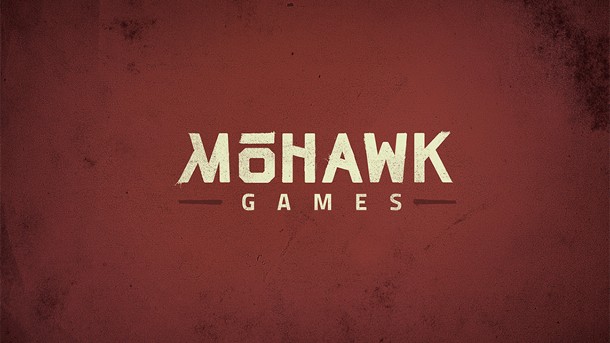Civilization IV Lead Designer Founds Mohawk Games, Announces First Project

A lot of changes have happened lately in the PC strategy scene, and Stardock CEO Brad Wardell has been at the center of much of it. In mid-October, Stardock announced the development of Galactic Civilizations III. A week later, the company announced it had provided some of the financing for a number of former Firaxis developers to found Oxide Games. Now, recent Stardock staff acquisition Soren Johnson is partnering with Stardock to launch his own studio, Mohawk Games.
Johnson is best known for his work leading the Civilization IV design team for Firaxis. After leaving Sid Meier’s studio, Johnson worked on the Spore team at EA and led the design for Facebook title Dragon Age: Legends. Now he’s working on a new project that approaches strategy from a different perspective.
When we spoke last week, the as yet un-named "Codenamed: Mars" was a focus of much of the conversation. The title is real-time strategy, but unlike most of the titles in the genre it isn’t focused on culling a few resources to amass armies. Johnson’s game flips the model, putting emphasis on economy over military.
“It’s a game that fits the format of an RTS,” Johnson says. “You can play with other people over 30 to 45 minutes, and it’s hypercompetitive. Instead of the core mechanics being about combat and military and rushing people, it uses a tycoon game mechanic.” Johnson calls his in-development title an “economic conquest” game. “The goal is to buy out your competition,” he explains.
Mars is approximately 75 percent economy and 25 percent military, which he suggests is the opposite of most RTS titles. To accomplish this, Mars features 13 different resources, and players need to choose which to focus on. There is conflict as players try to outmaneuver one another, but it takes a very different form than Starcraft and its ilk.
“There’s not really a diplomatic model; it’s a full RTS game,” Johnson says. “There is a lot of covert conflict. There are things like industrial espionage, and you can take over someone’s power plant or destroy some of the resources. You can also hire pirates to attack shipping lanes. You’re never really sure which of the other players is attacking you.”
Different factions in the game should keep play varied. Johnson suggests that Mars follows a model closer to Age of Empires, which offers more commonalities across factions, than Starcraft, which is heavily asymmetrical. “There are a few reasons why we’ll have different factions,” Johnson says. “In the resource model, there’s a free market going on in the background and prices go up and down. The core thing about these different factions is that they’ll need one or more resources more than the other. The mix of factions that go into the game will highly impact how the market changes and how the game feels.”
The title uses Oxide Games’ Nitrous Engine, which is designed for strategy titles. “Mars will use the Nitrous Engine to convey the visual richness of the Martian landscape,” Wardell tells us.
“I’ve used different engines over the year in making strategy games,” Johnson adds. “Strategy games, generally speaking, you have to misuse a 3D engine to turn it into a strategy game. They are made for first- and third-person shooters with hand-built levels, not god-perspective and randomly generated terrain. That’s what Nitrous is for. The choices [Oxide Games] is making are with a strategy game focus.”
Johnson invokes the name of classic competitive economy title MULE when musing about his project. However, a simple reboot or update to that model isn’t enough. “If you were to start with the intention of hitting the same sweet spot as MULE, but you were doing it today, you have all the rest of history to look at,” he says. “You wouldn’t make it exactly like MULE, of course.”
“We’re not looking to do a MULE reboot,” Wardell explains. “It’s more in terms of inspiration. You can actually have fun conquering people without bombing them.”
As for Wardell, he is quickly amassing a legion of allies (not unlike one might find in Stardock’s own titles). “It’s less of an empire and more of a coalition,” he explains. “What we would like to see is for there to be a lot of different companies set up around the country or the world, where the people making the games have gathered the best talent in the industry to make innovative titles. Mars is a game that should have been made years ago in one form or another. With such limited shelf space, the people making those calls would say it’s too risky.”
In many ways, the creation of Oxide Games and the Nitrous Engine, and its application across Stardock-affiliated studios like Mohawk Games, is not unlike EA’s approach with Frostbite 3 and Ignite. Building a unified platform (and the knowledge base at a variety of studios to support it) will theoretically make for better titles. As more developers work with the Nitrous engine, they’ll contribute and tap into to a growing font of experience.
For Johnson, going from lead designer to studio head means a lot of changes and new responsibilities, but he’s taking it in stride. “I’m excited about the future and what’s in store,” he says.
We’ll have more on Mohawk Games and the studio’s first title as development progresses.

Get the Game Informer Print Edition!
Explore your favorite games in premium print format, delivered to your door.
- 10 issues per year
- Only $4.80 per issue
- Full digital magazine archive access
- Since 1991









